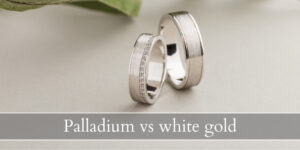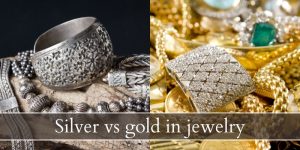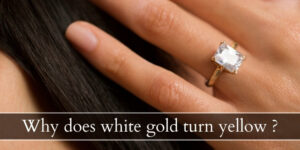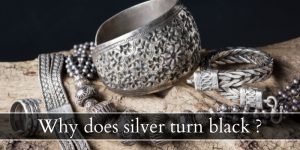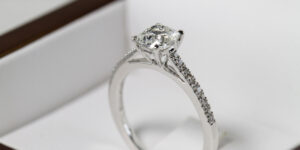Silver is one of the most common metals you can find when shopping for jewelry, and it’s undeniable beauty is only paralleled by its affordable price. How many of us have had our first jewelry pieces bought in silver ? Gold is and always will be more expensive, so silver is the natural option when buying your very first ring, or bracelet, or pair of earrings.
So when you’re looking at those sets of dazzling silver, you may be wondering why most of them say ‘sterling silver’ instead of just silver. Is there a difference between silver and sterling silver ? What does the 925 stamp mean on silver ? Let’s take a look.
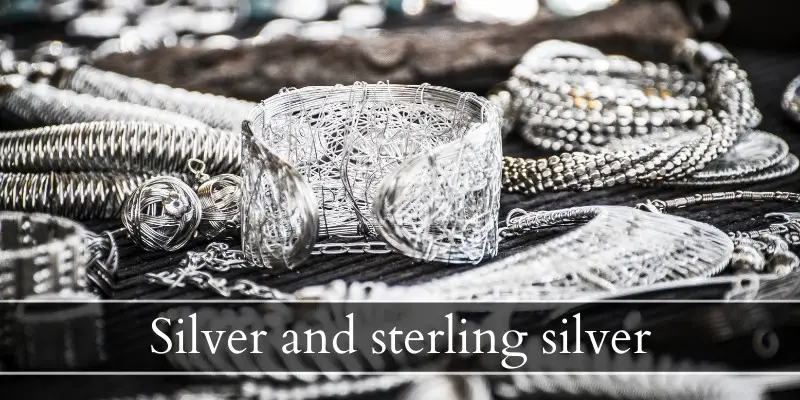
Silver vs sterling silver
Pure 99.9% silver is a very soft metal, just like pure 99.9% gold. Sterling silver is an alloy that has 92.5% pure silver and 7.5% another metal, usually copper. Sterling silver makes for a very durable metal, suited for everyday use such as silverware, jewelry, and other household items that see regular use.
Pure or fine silver is too soft
Pure silver is simply too soft for everyday use. It easily bends out of shape and is highly prone to scratching. This means it can’t be used as-is, which is why sterling silver became the common version of silver. Very few people have actually seen pure silver, aside from jewelers and metalsmiths.
For the longest time pure silver was alloyed with various metals to make it more durable, but there wasn’t really an industry or a standard to follow. Sterling silver became the go-to silver when it became the metal used for currency, as in coins. The oldest and first legal description of sterling silver dates back to 1275.
Centuries later American revolutionary Paul Revere acquired a silver mill, and used it to produce standard-sized silver, of uniform thickness. This was a boon to other metal smiths, since flattening the silver and getting it even was the most difficult and most time-consuming part of working with silver. This way silver could be used on a large scale, and by many people.
And so sterling silver became the stand-in for pure silver.
Read also: Why Does Silver Turn Black ?
Sterling silver has become the industry standard for jewelry
Because sterling silver is very durable, it’s become the industry standard for jewelry. You cannot get pure silver jewelry the same way you cannot get pure gold jewelry. If you’re planning to wear it at all, it will bend out of shape and scratch completely.
Sterling silver is rarely labeled as such in a display case, but it always has a hallmark or stamp on it, the most common being a small 925 stamped on a small, hidden part of the jewelry. On rings it’s on the inside, on earrings it’s either on the screw or the backing, and on bracelets and necklaces it’s stamped somewhere on the clasp.
Why is sterling silver 925 ?
Sterling silver is stamped 925 because it is the most common way of depicting its purity: 92.5% pure silver and 7.5 % another metal, usually copper. Other versions of the 925 stamp are:
- .925
- 92.5
- ster
- sterling silver
- 925 sterling silver
As long as there is a stamp on the metal, its numbers will generally tell you the percentage of pure metal. In gold the percentages are different, so you cannot confuse them.
Is sterling silver worth anything ?
Sterling silver has very little resale value, however you can still get a fair amount for it as a pawn show or a jeweler. In general silver is more affordable than gold, but it also has a lower resale value than gold.
Pure silver is worth a bit more than sterling silver, but getting a piece of pure silver is not easy, as there isn’t much for sale to the general public. Unless you’re looking to invest in silver, in which case you can easily find the stocks.
Does sterling silver tarnish ?
Yes, sterling silver can tarnish. It will slowly oxidize over time, turning a darker color and in extreme cases it will become dull, lose its shine, and take in a warm coppery hue rather than a silver-grey one. This is unavoidable, but it the process can be slowed.
Silver tarnish can be removed with common household items such as toothpaste, baking soda, vinegar, tomato juice (not ketchup), or you can just use commercial silver tarnish removers.
One thing sterling silver might do, is turn your finger green or black. This is because sterling silver contains 7.5% alloy metal, which is usually copper. And copper can turn the skin green-black when constantly worn on the skin, exposed to sweat and oils. If you have particularly sensitive skin the reaction may be quicker, and some people have no reaction at all.

I’m the main author for jewelrymaterialguide.com. I started this site after we did tons of research before our wedding and noticed that there is information about rings, jewelry, and so on that is really hard to find on the internet.

